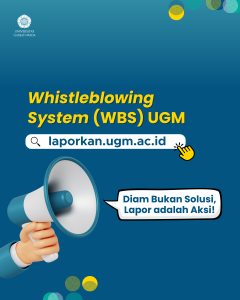Managing canteen waste on campus is a strategic step toward creating a clean, healthy, and sustainable environment. Through recycling-based and waste reduction approaches, this initiative not only minimizes negative environmental impacts but also supports the achievement of the Sustainable Development Goals (SDGs), particularly Goal 12 (Responsible Consumption and Production) and Goal 13 (Climate Action).
Campus canteens typically generate two main types of waste: organic waste, such as food scraps, and non-organic waste, such as plastic and paper packaging. The first step in waste management is the separation of waste types at the source.
Organic waste can be utilized through natural decomposition into compost, which helps fertilize green spaces on campus. Another alternative is bioconversion using black soldier fly larvae, which not only reduces waste volume but also produces byproducts such as organic fertilizer.
Meanwhile, non-organic waste such as plastic and cans is placed in designated bins to facilitate recycling. Campus canteens can adopt policies to reduce single-use plastic, replacing it with environmentally friendly materials such as biodegradable containers and straws. This approach not only decreases waste burdens but also educates students and visitors to be more environmentally conscious.
The success of canteen waste management lies in education and participation from the entire campus community. Awareness campaigns about the importance of waste separation and the benefits of proper waste management can enhance campus-wide awareness. Well-managed waste not only contributes to environmental cleanliness but also creates economic opportunities through recycled products.
Campus canteen waste management aligns with the SDGs. By reducing and recycling waste, campuses support Goal 12 by promoting more responsible consumption and production patterns. Additionally, reducing plastic waste and utilizing organic waste help lower greenhouse gas emissions, supporting Goal 13 for climate action.
By implementing these measures, campuses not only become cleaner and more comfortable learning environments but also pioneers in fostering sustainability awareness. Innovative and integrated waste management is a crucial part of creating a healthy learning environment and a greener future.
Authors: Buana Yaksa & Pram



